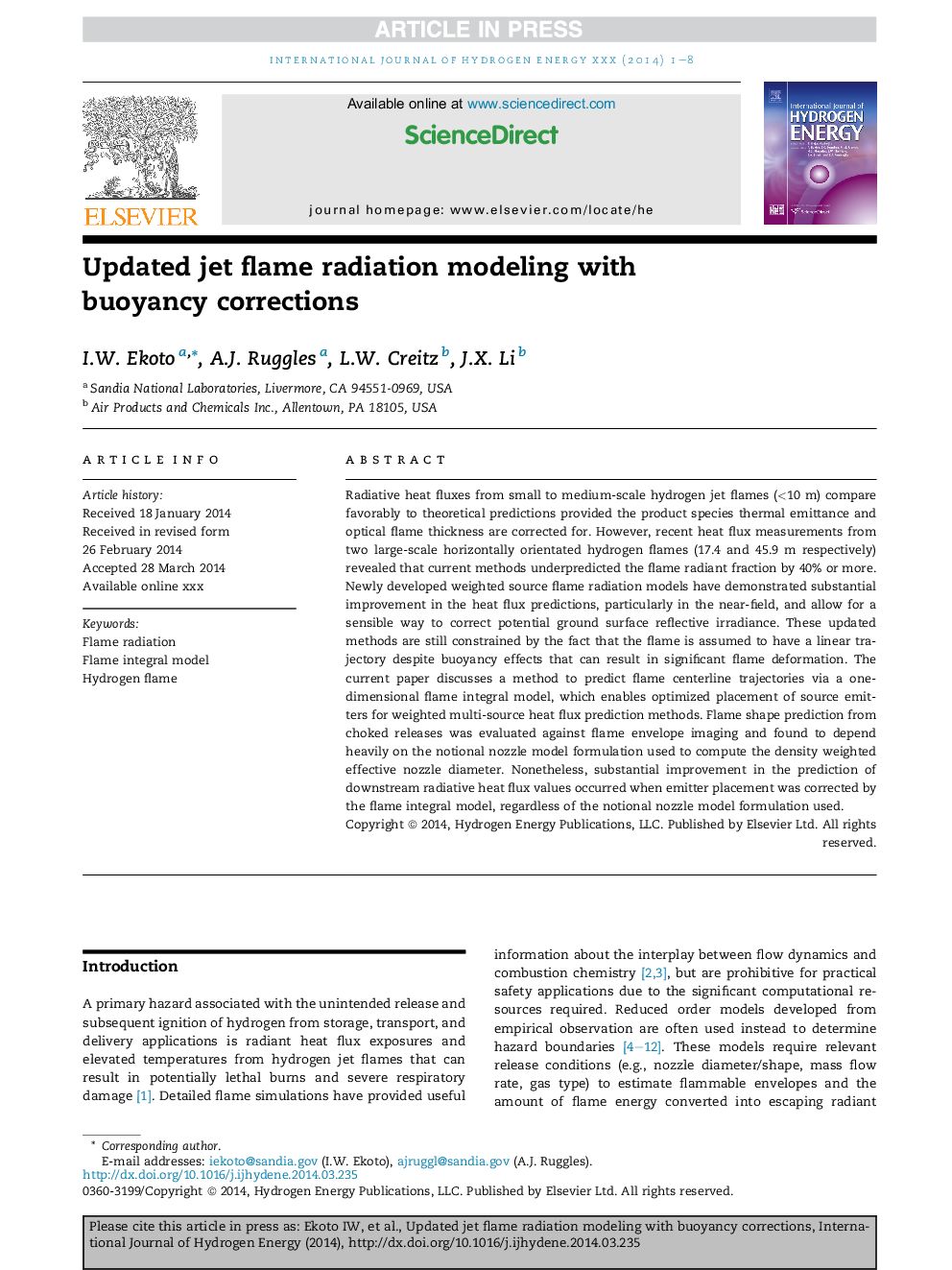| Article ID | Journal | Published Year | Pages | File Type |
|---|---|---|---|---|
| 7717986 | International Journal of Hydrogen Energy | 2014 | 8 Pages |
Abstract
Radiative heat fluxes from small to medium-scale hydrogen jet flames (<10Â m) compare favorably to theoretical predictions provided the product species thermal emittance and optical flame thickness are corrected for. However, recent heat flux measurements from two large-scale horizontally orientated hydrogen flames (17.4 and 45.9Â m respectively) revealed that current methods underpredicted the flame radiant fraction by 40% or more. Newly developed weighted source flame radiation models have demonstrated substantial improvement in the heat flux predictions, particularly in the near-field, and allow for a sensible way to correct potential ground surface reflective irradiance. These updated methods are still constrained by the fact that the flame is assumed to have a linear trajectory despite buoyancy effects that can result in significant flame deformation. The current paper discusses a method to predict flame centerline trajectories via a one-dimensional flame integral model, which enables optimized placement of source emitters for weighted multi-source heat flux prediction methods. Flame shape prediction from choked releases was evaluated against flame envelope imaging and found to depend heavily on the notional nozzle model formulation used to compute the density weighted effective nozzle diameter. Nonetheless, substantial improvement in the prediction of downstream radiative heat flux values occurred when emitter placement was corrected by the flame integral model, regardless of the notional nozzle model formulation used.
Keywords
Related Topics
Physical Sciences and Engineering
Chemistry
Electrochemistry
Authors
I.W. Ekoto, A.J. Ruggles, L.W. Creitz, J.X. Li,
